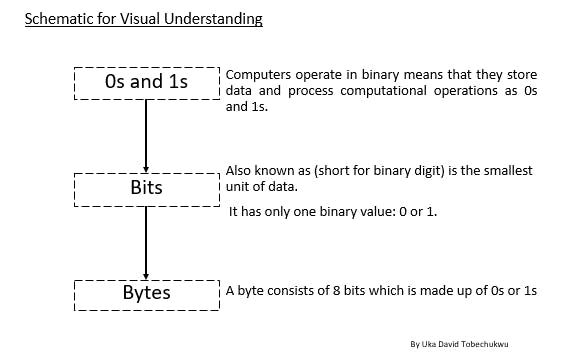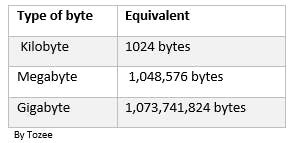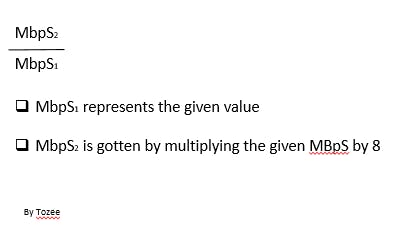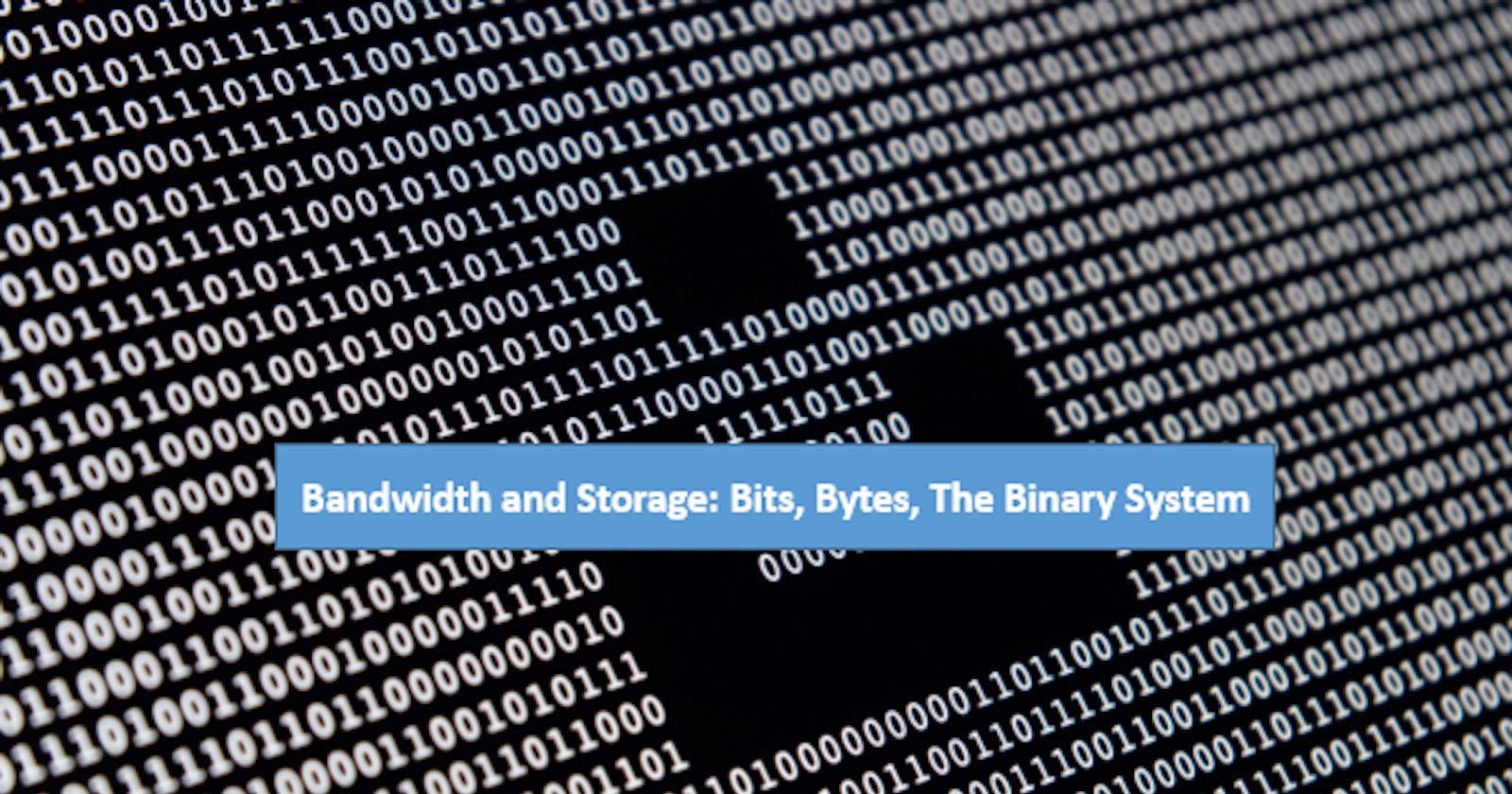Table of contents
No headings in the article.
Introduction Modern computers are based on the binary number system which is represented as (0s and 1s). In this article, I will be explaining the differences between bits, bytes and the binary system, between megabits and megabytes in relation to bandwidth and storage in the simplest way. I want you to see me as a friend with a torchlight in the dark, follow me as I lead you through this path.
Computers operate in binary means that they store data and process computational operations as 0s and 1s. This might appear vague, but continue reading, it will become clearer. For example, in programming a computer to perform certain operations, 0s can be used to denote false (which will either signal the computer to stop or not run the program) while 1 can be used to denote true (which signals the computer to continue running the program or kick-start the program). This is an example of a Boolean logic that represents true or false.
So you now know that computers process computational operations or calculations by using 0s and 1s and you have seen an example of a way a computer can perform this operation using the 0s and 1s. Now we will discuss bits and bytes, but before we go into that, please take a look at the table below.

What is Bits
A bit is also known as a binary digit and it is the smallest unit of data in a computer. It has a single binary value of either 0 or 1 or a group of 0s and 1s. I believe that we have been working with the decimal number system which has 10 digits in base 10. 0s and 1s occupy the binary number system in base 2. Now that we've understood what bits are, we want to look at what bytes are and how we can identify them.
What is Bytes
Bytes are groups of bits such that 8 bits equal 1 byte. In addition, you may have seen some of these terminologies such as Kilobytes, Megabytes, Gigabytes, Terabytes, Petabytes, Exabytes, Zettabytes, and Yottabytes.
Below are examples of the equivalents of the Kilobyte, Megabytes, and Gigabytes. And as a way to further read and understand, you can type out the equivalents of the Petabytes, Exabytes, Zettabytes, and Yottabytes in the comment section.

Bits and Bytes in relation to bandwidth and storage
We have understood the basic meaning of bits, and bytes, and how the computer uses the binary system to perform calculations. Now, we will be looking at the difference between MB/s and Mb/s. Looking at both concepts, they appear alike, right? Continue reading because you are almost done. MB/s is referred to as megabytes per second while Mb/s is megabits per second. They are different right? Remember that previously, we agreed that 8 bits make 1 byte, which shows that the byte is greater than the bits, and as such (byte) can be represented with a capital letter (B), while the smaller one (bits) can be represented with a small letter (b). Interesting right?
Now we will be looking at their application in bandwidth. For bandwidth speed, most people refer to Mb/s as megabytes per second which is wrong. After the explanation above, you now understand it is megabits per second (Mb/s) and not megabytes per second (MB/s). Good job, you are doing a very good job.
Example
Example 1. If your network speed is 200Mbps and you want to download a document that is about 200MBps. How long will it take to complete the download?
Solution
Since we know that 1 MBps = 8Mbps 200MBps = xMbps After we have crossed multiplied xMbps = 1600Mbps. Therefore, it will take about 1,600Mbps to completely download 200MBps.
To know how long, it will take to download, we will divide 1600Mbps by 200Mbps which equals 8 seconds
Therefore, it will take a network speed of 200Mbps 8 seconds to download a file size of about 200MBps
My Shortcut
Now I devised a formula that can help you plug and play.

I hope this helps.
Thank you for reading and follow me as I continue to break down complex concepts.
Resources:
Stanford, 2018. Lecture #1: Bits, Bytes, and Binary. web.stanford.edu/class/cs106e/lectureNotes/..
TechTarget Contributor, 2010. bit (binary digit) techtarget.com/whatis/definition/bit-binary..
Stephen Wilson (Red Hat), 2020. When bandwidth and storage size matters: Bits vs. bytes redhat.com/sysadmin/bits-vs-bytes#:~:text=S..
